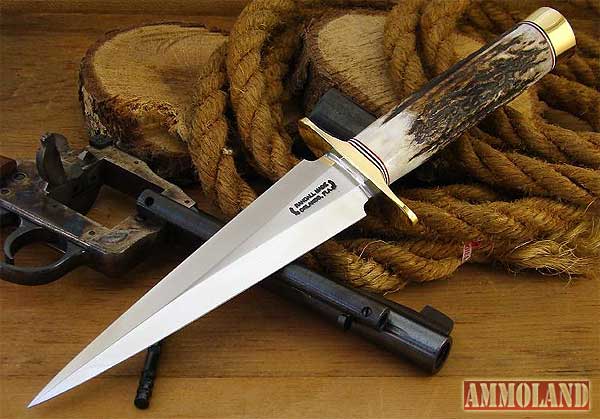

Gilbert, AZ –-(Ammoland.com)- The first detailed scholarly analysis of knives and the Second Amendment has been published in the University of Michigan Journal of Law Reform (vol. 47, pages 167-215).
Authored by noted Second Amendment scholars David Kopel, Clayton Cramer and Joe Olson, the paper makes the case for knives as “arms” protected by the Second Amendment, supporting one of Knife Rights’ foundational tenets.
Knife Rights applauds these scholars for this long-overdue effort. This is a great start on the sort of scholarly work that needs to be done to assist in potential legal cases down the road. The arguments made and supported in this article will also support our legislative efforts to roll back knife bans and oppose proposed new restrictions on knives.
(Note: If you reviewed an earlier draft this past spring there are many, many changes in the final article that make it worthwhile to review again)
The complete article “Knives and the Second Amendment” can be downloaded at: www.kniferights.org/Knives-and-the-Second-Amendment.pdf
Kopel writes in his blog: The Second Amendment guarantees the right to keep and bear “Arms“-not solely “firearms.” While firearms have always been the paradigmatic Second Amendment arm, there are many other types of arms which are protected by the Second Amendment. By far the most common of the other arms are knives.
- Under the Supreme Court’s standard in District of Columbia v. Heller, knives are Second Amendment “arms” because they are “typically possessed by law-abiding citizens for lawful purposes,” including self-defense.
- There is no knife that is more dangerous than a modern handgun; to the contrary, knives are much less dangerous. Therefore, restrictions on carrying handguns set the upper limit for restrictions on carrying knives.
- Prohibitions on carrying knives in general, or of particular knives, are unconstitutional. For example, bans of knives that open in a convenient way (e.g., switchblades, gravity knives, and butterfly knives) are unconstitutional. Likewise unconstitutional are bans on folding knives that, after being opened, have a safety lock to prevent inadvertent closure.
The article provides an explanation of various types of knives, of criminological evidence regarding knives, and of the 19th century panic and case law about Bowie Knives and Arkansas Toothpicks. We then apply the Second Amendment to modern knife laws. We cover the utility of knives for personal self-defense and for militia use, and the constitutional significance of technological changes in knives since 1791. Finally, the article considers some modern prosecutions, statutes, and cases from Washington, Oregon, Indiana, New York, and D.C. We conclude that even under the weakest relevant standard (intermediate scrutiny), blanket bans on the carrying of knives (or of certain types of knives, or of knives with a blade longer than a particular length) as well as bans on the home possession of some types of knives violate the Second Amendment.
See the complete blog post at: https://www.volokh.com/2013/11/23/knives-second-amendment/
Knives and the Second Amendment
About:
Knife Rights (www.KnifeRights.org) is America’s Grassroots Knife Owners Organization, working towards a Sharper Future for all knife owners. Knife Rights is dedicated to providing knife owners an effective voice in public policy. Become a Knife Rights member and make a contribution to support the fight for your knife rights. Visit www.kniferights.org
